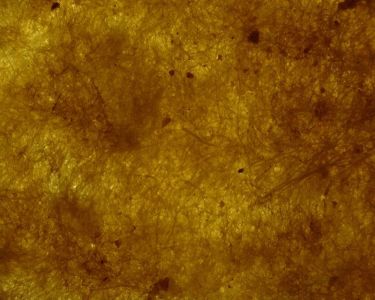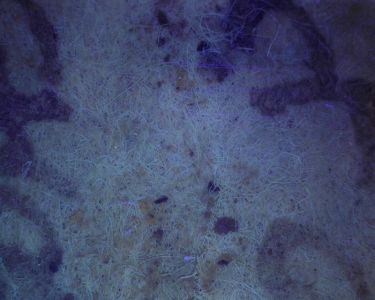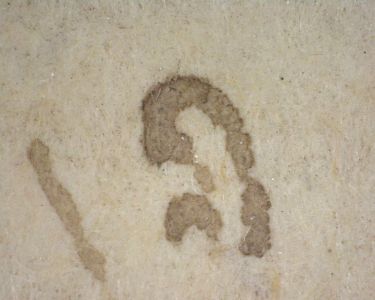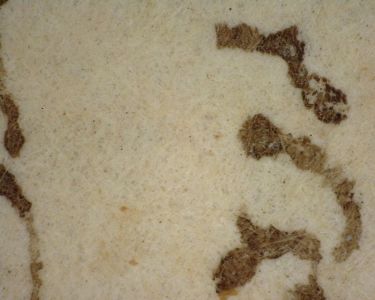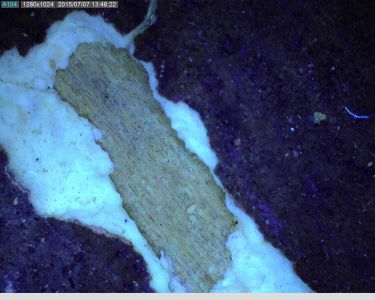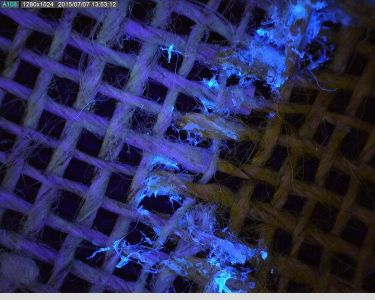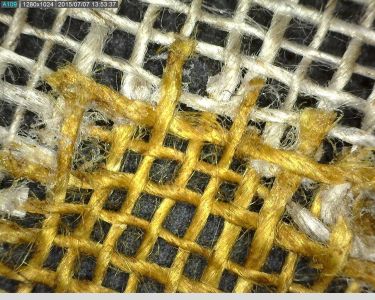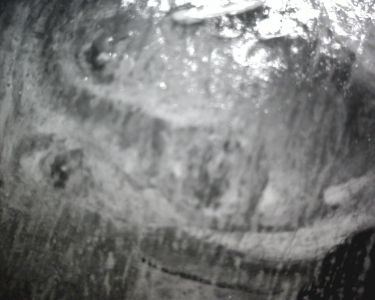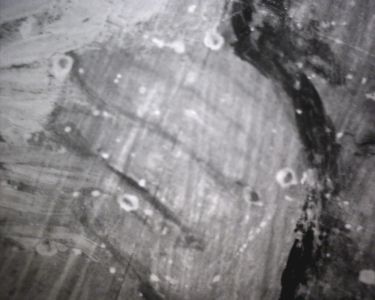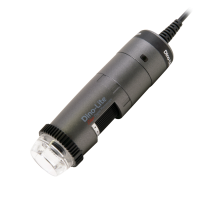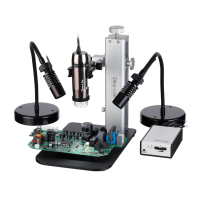ART RESTORATION
DINO-LITE FOR ART CONSERVATION & RESTORATION
The University of Lincoln in the UK has a department of conservation and restoration that teaches students in these special subjects. Joanne Wright is scientific technician and teaches in the department. The department is using several Dino-Lites. "We receive objects from museums but also quite a few from private individuals. They often want to know more about the history of the object, but they may also ask us to restore the object or to prevent further decay. We come across many different materials, such as metal and stone, but also wood, leather and cloth. With our Dino-Lites – we own at least 8 of them - we can quickly analyse the material, for instance a textile. With Dino-Lite we can zoom in to the fibre level and this will tell us a great deal. Not just in historical perspective, but it can also 'tell' us how to conserve or restore."
Lice
The Dino-Lite with UV light is often used to look at paintings. Joanne: "This allows us to look at the painting layer by layer. We cannot only judge the colours, but we can also see if there are other paintings on other layers or see if there is older restoration work. This makes the UV light a very relevant addition to the microscope function. We also use the polarisation function quite often. This can take away annoying glare, for instance on metal objects, which will literally give us a better image.
It happens that the Dino-Lite works too well and Joanna and her students get to see things that they had rather not seen. "Right, we recently had to study a rag doll and during the inspection with the Dino-Lite we saw that the doll was covered with lice. It was swarming with them. We quickly put it in the freezer and only continued the next day when all the lice were dead."
It happens that the Dino-Lite works too well and Joanna and her students get to see things that they had rather not seen. "Right, we recently had to study a rag doll and during the inspection with the Dino-Lite we saw that the doll was covered with lice. It was swarming with them. We quickly put it in the freezer and only continued the next day when all the lice were dead."
Dino-Lite products are used in many restoration workshops and museums throughout Europe. The Dino-Lite is a very useful tool for classifying, documenting and performing restorations on paintings, paper, textiles and other objects of art. For restorer Marjan de Visser, the Dino-Lite is a very helpful tool in her restoration work:
"When restoring a painting, it was unclear whether parts of it were painted over and whether in the past any damage had been done by varnish removal. It was said, that in the past, a friend of the owner did them a favor by cleaning the painting with a strong acid. Something went wrong with this, and to examine this properly, I inspected the painting with a Dino-Lite digital microscope at 45x magnification. The images measure 9 mm in width:"
"When restoring a painting, it was unclear whether parts of it were painted over and whether in the past any damage had been done by varnish removal. It was said, that in the past, a friend of the owner did them a favor by cleaning the painting with a strong acid. Something went wrong with this, and to examine this properly, I inspected the painting with a Dino-Lite digital microscope at 45x magnification. The images measure 9 mm in width:"
Click here to download the Dino-Lite "cultural heritage" theme brochure.
MORE APPLICATION STORIES











